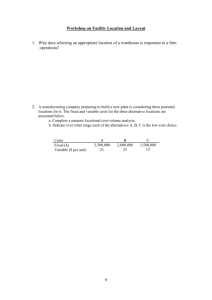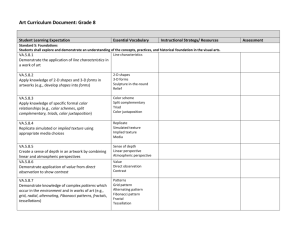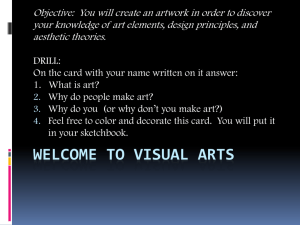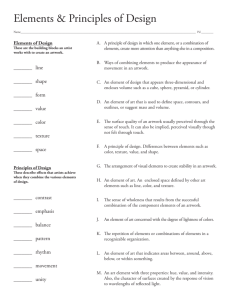PHIL 100 (STOLZE)
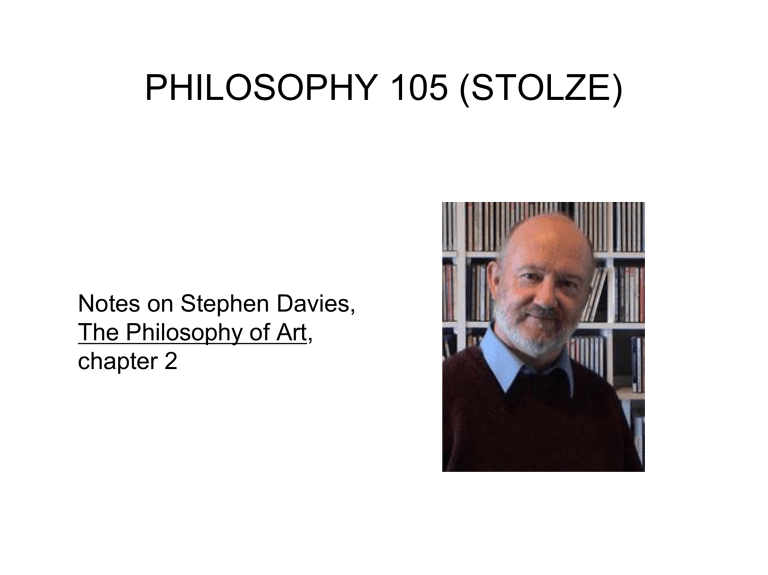
PHILOSOPHY 105 (STOLZE)
Notes on Stephen Davies,
The Philosophy of Art, chapter 2
A Thought Experiment
Imagine you are the captain of a firefighter team and you have just arrived at a warehouse engulfed in flames. The owner of the warehouse pleads with you to save all the precious artworks stored inside the warehouse. How would you decide what to save?
Would You Save This Object?
Would You Save This Object?
An Ancient Mayan vessel for consuming chocolate, a drink of sacred significance (600-
800 C.E.), from Southern
Campeche, Mexico. Ceramic with cream, red, and black slip.
A new acquisition to the
LACMA, Los Angeles (2006).
Formerly on exhibit at The
Brooklyn Museum.
Would You Save This Object?
Would You Save This Object?
Marcel Duchamp, In Advance of the Broken Arm (1964, fourth version, after a 1915 lost original).
Wood and galvanized-iron snow shovel,
52" (132 cm) high.
Currently housed at the Museum of
Modern Art in New York City.
Would You Save This Object?
Would You Save These Objects?
Carl Andre, Equivalent VIII (1966).
Firebricks object: 127 x 686 x 2292 mm.
Currently housed at the Tate
Modern Gallery in England.
“The sensation of these pieces was that they come above your ankles, as if you were wading in bricks', Andre has commented. 'It was like stepping from water of one depth to water of another depth.' This was the last in his series of Equivalent sculptures, each consisting of a rectangular configuration of 120 firebricks.
Although the shape of each arrangement is different, they all have the same height, mass and volume, and are therefore
'equivalent' to each other. (From the display caption August 2004.)
A Definition of the Definition of Art
“A definition of art should indicate what all and only art has in common and in virtue of which it is art. In other words, a definition should identify the elements that all art must have, such that anything possessing them thereby is art” (p. 26).
Necessary Conditions and Sufficient Conditions
•
A necessary condition for something’s being an X is a condition that all Xs must satisfy.
•
A sufficient condition for something’s being an X is a condition that, when satisfied, guarantees that what satisfies it is an X.
•
A necessary condition (or the set of necessary conditions) that is sufficient for something’s being an X is a combination of conditions such that all and only Xs meet them.
•
So, a definition of art should identify the necessary condition (or the set of necessary conditions) that is sufficient for something’s being art.
The Nature and Extension of Concepts
•
The nature of a concept X = a definition of X in terms of necessary and sufficient conditions.
•
The extension of a concept X = the class of things that fall under it.
•
So, we could agree on the nature of the concept of art without agreeing on the extension of the concept of art in the world.
Essentialism and Anti-Essentialism
•
Essentialism = the members of kinds are “characterized by an underlying principle or pattern” (p. 28)
•
Anti-essentialism = a rejection of essentialism
•
How should we apply these perspectives to attempted definitions of art?
Arguments Against Art’s Definition
•
No conditions are necessary for something’s being art.
•
Art’s creative, rebellious, transgressive nature prevents its definition.
•
Defining art is possible but not useful or revealing.
If Not an Essence,
What Unifies the Concept of Art?
•
Family resemblances (p. 32)
•
The cluster theory (p. 33)
•
Radical stipulativism (p. 34)
•
Particularism (p. 34)
Three Definitions of Art
•
Aesthetic Functionalism = “something is an artwork if it is intended to provide the person who contemplates it for its own sake with an aesthetic experience of a significant magnitude on the basis of an appreciation of its aesthetic features” (p. 36).
•
The Institutional Theory = “an artwork is an artifact of a kind created by an artists to be presented to an artworld public” (p. 38).
•
Historicism = “something is art if it stands in the appropriate historical relation to its artistic predecessors” (p. 39).
Definitions and Non-Western Art
A key question for all definitions of art: “Can these definitions accommodate the existence of nonWestern art?” (p. 41)
Taking Stock
•
What distinguishes art from ordinary things?
•
What is the difference between (a) offering a definition of art and (b) supplying a theory of the value of art?
Four Possible Approaches to an Artwork
•
Representational
•
Expressive
•
Formal
•
Conceptual
Chuck Close, Self Portrait (1967-68)
Frida Kahlo, Las Dos Fridas (1939)
Francis Bacon, Three Studies for Figures at the
Base of a Crucifixion (1942)
Paul Klee, Twittering Machine (1922)
Mark Di Suvero, Snowplow (1968)
John Heartfield, War and Corpses: The Last Hope of the Rich (1932)
Judy Chicago, Driving the World to Destruction
(1988)

